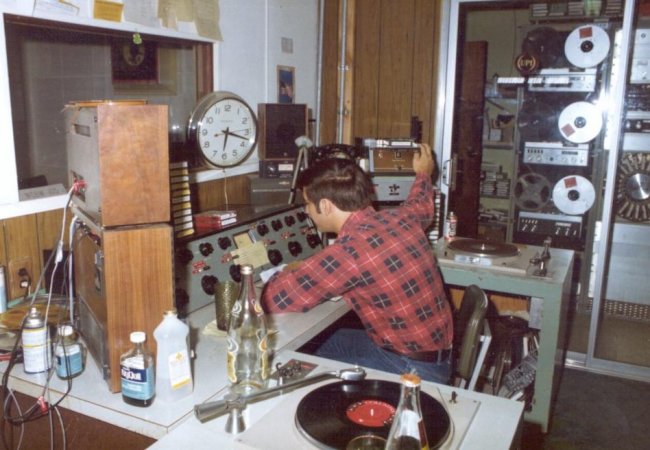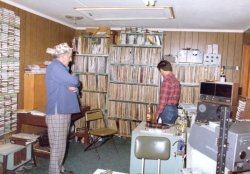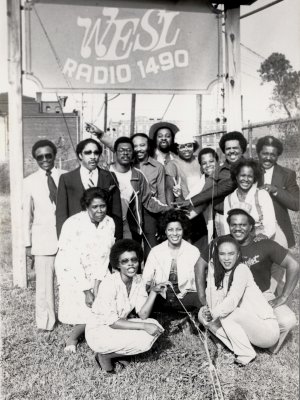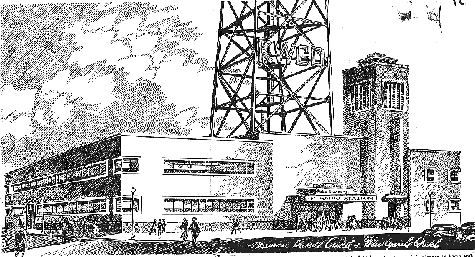Radio Articles
Ralph Hansen Will Never Forget Pearl Harbor
The life of a staff announcer in local radio in the 1940s was not exactly filled with thrills and excitement. But Ralph Hansen remembers one day, even though it occurred over 60 years ago.
Hansen had grown up in Wisconsin, going to school in West Bend, north of Milwaukee. One day a group of students was taken on a tour of a local radio station and the hook was set for Hansen. Later, as a student at Northwestern University’s downtown Chicago campus, he applied for the job of page at WMAQ, NBC’s huge operation in the Mart Building. As a page, he was able to attend classes run by the network to train future announcers, and when that training was finished, the network helped place the successful students in radio jobs. Ralph Hansen ended up at WALA in Mobile, Alabama.
And he ended up in St. Louis because of a woman. She’d caught his eye in Alabama, but as a student at Stephens College in Central Missouri, she wouldn’t be spending much time in Mobile. Hansen auditioned at KSD in St. Louis for Frank Eschen, the station’s news director, and was given the job of staff announcer. He was 20 years old, and today, he says he has no idea what happened to that girl.
Working at KSD in the late 1930s and early 1940s was a pretty good gig. The station was owned by the Pulitzers, who also owned the Post-Dispatch. The company’s building was on the northeast corner of 12th and Olive, and they’d put a separate entrance on the Olive Street side of the building for the radio station. KSD was a strong union shop, with engineers who belonged to IBEW and announcers who were members of AFRA.
Eschen saw some possibilities in the youngster, but Hansen’s announcing needed some refining, so Eschen would take the young man upstairs into the observation booth overlooking the studios. There Eschen would have Ralph read copy while the news director would critique his work. Hansen soon scored a slot as the regular staff announcer for Russ David’s “Alpen Brau” program. But there were additional duties, and it wasn’t exactly a glamorous job. A schedule would be posted each week outlining the shifts of the announcers, and often, their only duty would be to sit in the studio during network feeds and voice the live station identification at the hour and half-hour.
This was the sort of shift that brought Ralph Hansen to the KSD studios one early December Sunday in 1941. He and the engineer were the only two people there. At 1:00, the NBC “Chicago Round Table” program began, and Hansen left the studio and wandered into the deserted newsroom. He was bored, so he was looking around for something to occupy himself when one of the wire service machines began a loud ringing sound, the signal that something of great importance was being transmitted. Hansen rushed to the machine and tore off the copy. As he read it, he inadvertently blurted out “Oh, my God!” and went running into the control room to tell the engineer he had to break into the NBC feed. Then dashing into the studio, Hansen gave the signal and blurted into the open microphone the news that the Japanese had just attacked Pearl Harbor in Hawaii.
The engineer rejoined “Chicago Round Table” and Hansen went back into the newsroom to see if any more information had come in. A few minutes later, the flash bulletin containing the same information interrupted the program again, but this time the news came from the network. Here in St. Louis, a 20 year-old staff announcer had scooped the network by several minutes and, in the process, had also beaten all the other local stations in getting the news on the air.
The rest of Hansen’s day was anti-climactic. He finished his shift and went home to his apartment. Soon afterward he would join the armed forces, returning to KSD in 1946 to take up the position of staff announcer again. When the Post-Dispatch went on the air with KSD-TV on February 8, 1947, Hansen made the transition and never returned to radio.
(Reprinted with permission of the St.Louis Journalism Review. Originally published 3/w2004.)



